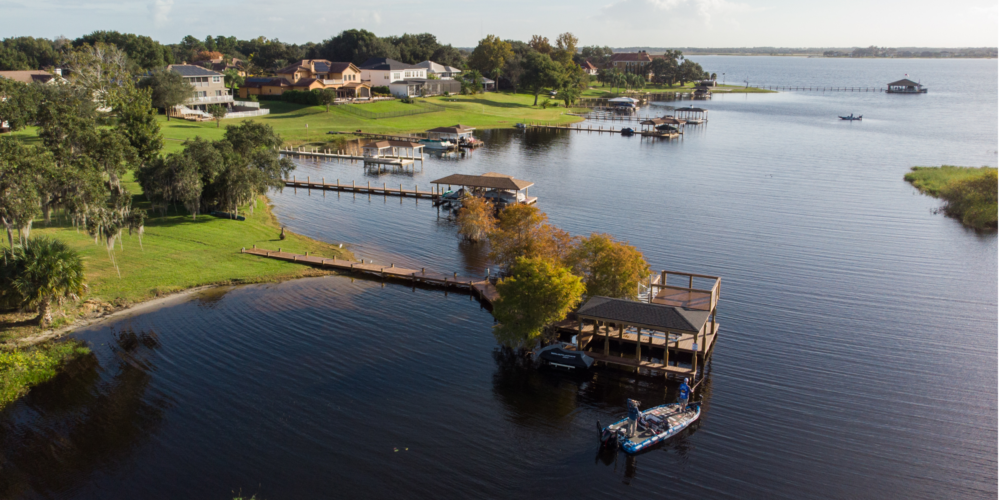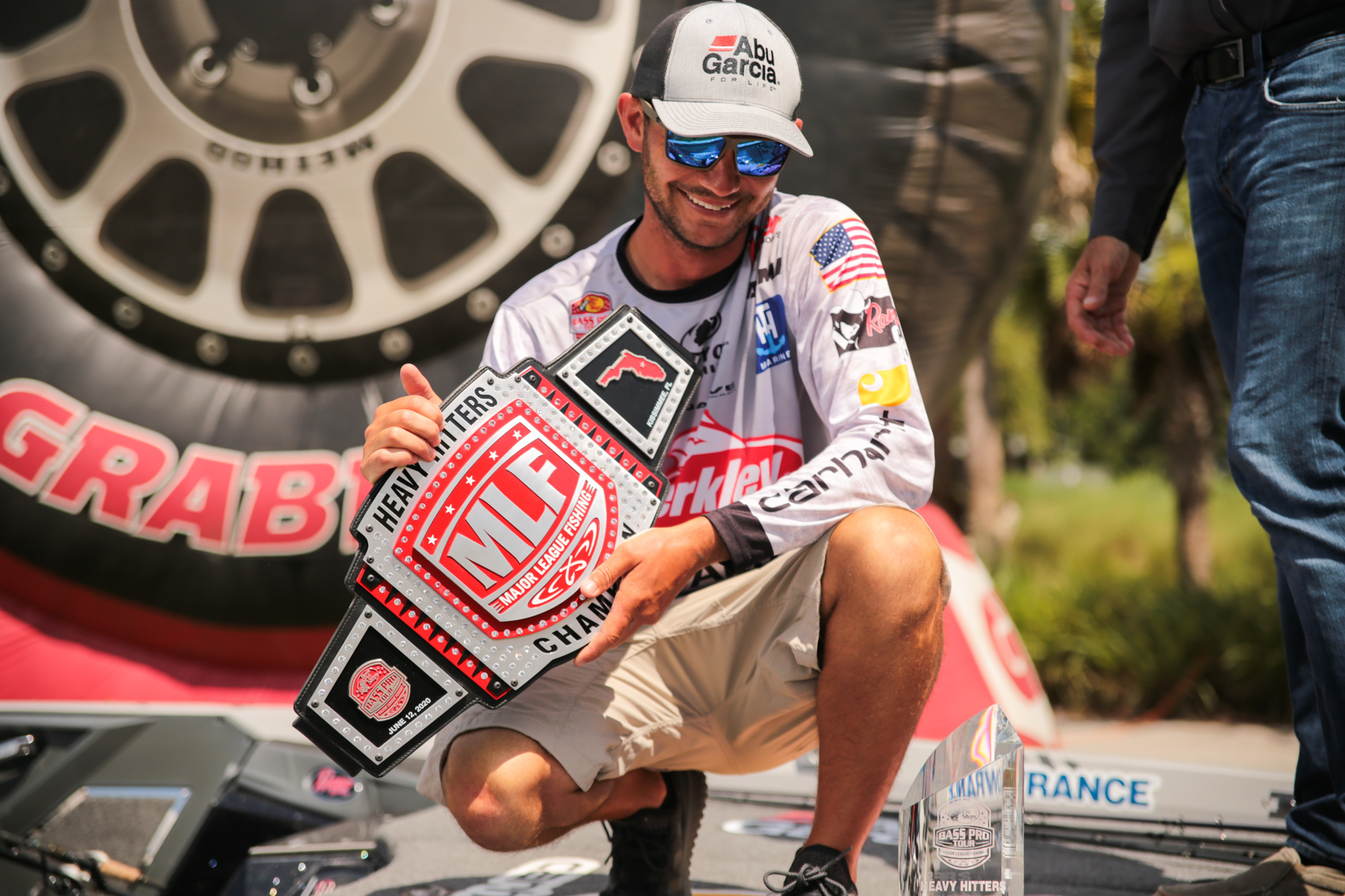What to watch for this week as action begins on the Kissimmee Chain

KISSIMMEE, Fla. – The kickoff to the 2023 Bass Pro Tour season is on a fishery that’s very familiar to virtually all of the anglers in the 80-man field. Launching out of Big Toho Marina to start a season is a rite of passage for professional anglers (ditto the league, which has chosen the Kissimmee Chain for the season opener two times in the five-year history of the Bass Pro Tour).
Kissimmee Chain in history
There’s plenty of bass-fishing history on Toho and the chain of lakes attached on the Kissimmee Chain, with career-defining accomplishments for several anglers in the field:
- Dean Rojas set the five-fish limit record of 45 pounds, 2 ounces in 2001 within sight of the Big Toho ramp.
- Luke Clausen claimed a Bassmaster Classic title on Toho in 2006.
- Jordan Lee claimed the first-ever Bass Pro Tour trophy in 2019 in an event that started on the Kissimmee Chain and wrapped up on Lake Garcia.
- A year later, Lee claimed the first Heavy Hitters belt on the Kissimmee Chain.

About the fishery
The Kissimmee Chain encompasses over 65,000 acres of fishable water and includes four primary lakes: Tohopekaliga (Toho), Cypress, Hatchineha (Hatch) and Kissimmee. They each feature stereotypical Florida fishing, with grass being the primary cover. Native Kissimmee grass and bulrushes line nearly every shallow shoreline throughout the chain and submerged grasses such as hydrilla and eelgrass provide cover in slightly deeper water.
The lakes are connected via a system of locks and canals. The tournament takeoff is in Toho (22,700 acres of fishable water), but you can expect a contingent of anglers to lock out of Toho to fish the other lakes in the chain.
Lake Kissimmee is the biggest of the bunch at just under 35,000 acres and will attract anglers who commit to a long run to get to fish that are a little out of the way. Cypress and Hatch are much smaller but still have potential to kick out stout five-fish limits.
What to expect
Almost exactly one year ago (on Feb. 12, 2022), Florida pro Garrett Rocamora won the Phoenix Bass Fishing League event on Toho with 18 pounds, 8 ounces. The full-time guide on the Kissimmee Chain said that was an unusually low winning weight due to the conditions and expects much better fishing for the Bass Pro Tour anglers.
“This year, it’s fishing much better and there’s a lot more water in the whole chain,” he said. “After the hurricanes and tropical storms we had, there was a lot of water flowing, almost rapids, through the system and it’s all new water this year. It was low last year and much higher this year, so there’s more for the fish to get back into to spawn.”
Rocamora reports that there’s already been one big spawning wave and he expects more spawning activity during tournament week.
“The new moon is right at the end of the tournament and the time around the new moon always seems to do better than the full moon for getting the fish to spawn down here,” he said.
Local tournaments are taking 25 to 30 pounds to win, and Rocamora expects plenty of five-fish scoring limits to hit that mark during Stage One, on various techniques.
“A lot of it will be typical Florida stuff with worms, Senkos, and swimbaits like the Gambler Big EZ and Reaction Innovations Skinny Dipper,” Rocamora said. “There will also be some sight fishing going on and baits like a lipless crankbait and ChatterBait will definitely come into play in the hydrilla. Also, expect some fish to be caught on topwaters like the Devil’s Horse.”
When asked which lake is fishing the best, Rocamora says that Kissimmee and Toho will get the most attention.
“Those two are fishing pretty good,” he confirmed. “Cypress hasn’t been that great lately, but I think some guys might find flipping fish on Hatch.”
A quick check of the Florida Fish & Wildlife Conservation Commission’s (FWC) bigcatchflorida.com database shows that an 11-pounder was caught on Kissimmee the weekend before the tournament.

State of the chain
Many bass anglers keep tabs on the fishing on the Kissimmee Chain, but nobody knows it inside and out from a biology perspective like Marty Mann, the FWC biologist who oversees the management of the chain. Mann says that the overall health of the fisheries is good, and that Stage One should see plenty of hearty Florida largemouth.
“Florida this time of year is feast or famine and all dependent on the weather,” he said. “The cold fronts that move in can shut off the bite overnight, but the forecast looks good for the event and the lakes are producing consistent fish, with more big fish showing up in the reported catches.”
Mann agrees with Rocamora that Toho and Kissimmee will be the most popular lakes during the event, noting that fish in the two lakes are in different stages.
“Hatch and Cypress are mainly pass-through lakes and most [anglers] run right past them on the way to Kissimmee, but there will be a few guys who do well in the smaller lakes,” Mann said. “Right now, the fish on Toho are positioning along the edges of the Kissimmee Grass; on Lake Kissimmee, the fish are shallower and inside the grass.”
Typically in big events on the Kissimmee Chain, one lake is the “hot lake” and accounts for the bulk of the top finishes. Signs are pointing to Toho being the one this time around. According to Mann, the main difference between the two lakes right now is vegetation.
Toho, on the one hand, is full of it. Hydrilla is everywhere and the lake appears very healthy, while Mann says the opposite is true of Kissimmee. While vegetation control is a factor, Mann says there are other contributing conditions besides just spraying.
“There are a lot of factors for the loss of vegetation, including the exotic apple snails that chew the grass like cows,” he said. “We also had three hurricanes over the past two years pass directly over the lake, that piled up vegetation 5 feet high along the shoreline. The tournament results might not show it right away because the fish are still there, but there’s a significant loss of vegetation on Kissimmee. The fishing is still good with a lot of big bass, but the electrofishing and creel studies show a downward trend in the amount of small fish. It’s the opposite on Toho, with almost too much healthy vegetation and many small bass from the great spawns.”
The good news for Lake Kissimmee is that FWC has a project to reseed native vegetation this spring.
“We’re not just sitting back and doing nothing,” Mann said. “We’re working with the other organizations that handle the water management and will be hand planting bulrushes and Kissimmee grass in April or May when the water is lowered. It’s a half-million-dollar project that will help the lake and add to the natural germination that will occur. We’re doing everything we can to get the lake back to where it was.”